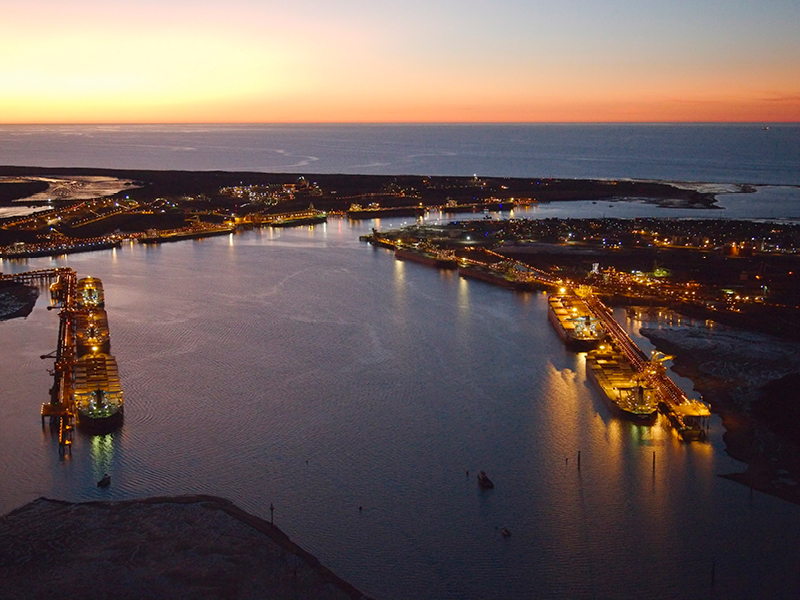Port Hedland’s marine environmental quality is being monitored and protected under a major management plan devised and overseen by Pilbara Ports and support by Port Hedland Industries Council and its members.
The marine environment also supports a range of sea life and habitats amid its rocky, sandy and muddy shores.
The shallow, intertidal creeks and extensive mangrove communities fed by strong tidal currents are also home to migratory shorebirds and marine turtles, among other wildlife.
Like all coastal marine environments, it is a complex interdependent ecosystem.
Protecting this ecosystem requires a thorough understanding of the introduced and natural processes and pressures, to enable monitoring and reporting on long-term trends in marine environmental quality.
As part of Pilbara Ports’ best-practice approach to environmental management and environmental stewardship for WA’s ports, it developed a management plan in 2020, which was implemented in 2021. Similar programs cover the ports of Dampier and Ashburton.
Port Hedland Industries Council developed a Marine Environmental Quality Management Plan (MEQMP) for the Port of Port Hedland in 2016.
It was developed because PHIC members had a desire to develop a common set of environmental quality criteria tailored to the local environment.
At the time, the need for a collaborative management plan was identified after a significant and intense period of port development.
PHIC is now partnering with Pilbara Ports in the ongoing management of its marine environment quality program.
A key feature of the current MEQMP involves quarterly sampling of marine waters and annual marine sediment monitoring, in combination with scientific assessment and observations at a range of monitoring sites within the port and surrounding areas.
Water and sediments collected as part of the MEQMP are sent to third party laboratories for a range of analyses to determine the presence of metals, hydrocarbons, nutrients, nuisance organisms and pathogenic bacteria.
Results from these analyses are used as indicators of the quality of the marine environment within the port.


